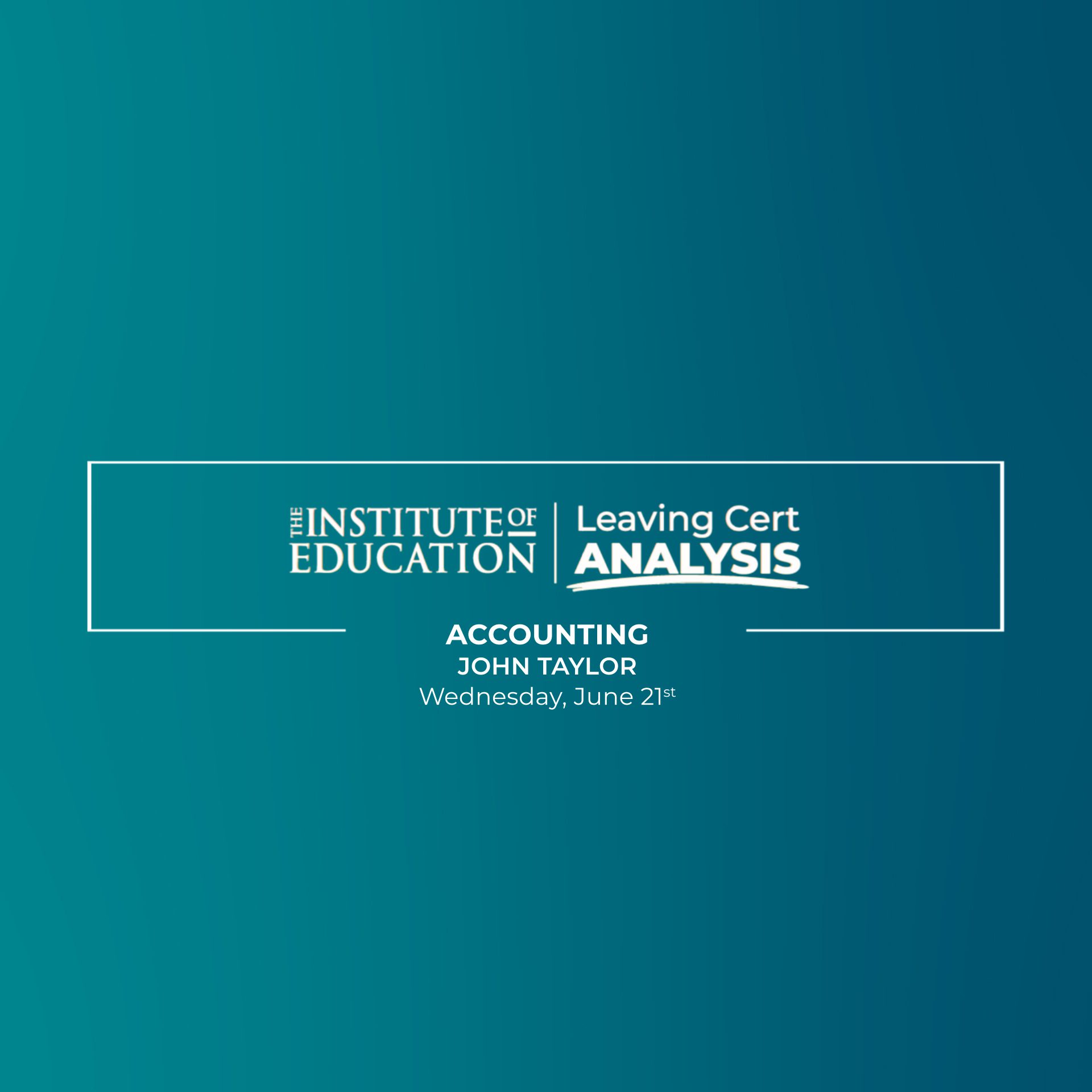Reaction to Leaving Certificate 2023 Accounting (Higher Level) by John Taylor, Accounting teacher at The Institute of Education.
- A fair and manageable paper but students will be pushed to complete all four questions in time.
- Anticipated topics appeared, so students familiar with previous trends will be relieved.
Accounting exams are always challenging for students as they must work right up to the borderline. Covid adjustments had allowed previous students to only answer three questions, but this was the first year to return to the four/five-question paper. This increase in pressure was well-balanced by the examiner asking accessible and transparent questions.
In Sction 1, students had a choice of Q1 on Final Accounts or the option of completing two 60-mark questions. As guaranteed again this year, students had two options for Q1 and these related to the Sole Trader and the Limited Company. Many students will have anticipated these two options and will have been happy with that. Both options for Q1 were nice and doable questions, a relief to the majority who expect to answer on Final Accounts. Neither were overly long, which means students should have been able to complete the question in the required time. The adjustments in both questions had all been seen before in previous questions but some of them were shorter than before in a welcome concession to timing. The inclusion of VAT with the goods in transit, the writing off of the patents commencing in 2020, as well as the suspense error involving an entry in the incorrect side of an account were the only parts that might have caused some students to trip up if they did not read the question carefully. As is always the case in Accounting, students that keep their heads and work through things methodically will be the most successful.
The three questions in Section 2 consisted of Interpretation of Accounts (which had been guaranteed), Published Accounts and Service Firm Accounts. Students aware of the pattern of topics from past papers may have been expecting most of these topics and so would have been very pleased. The questions themselves were very nice and did not contain anything that students would not have seen and practiced in previous year’s questions. The ratios in Q5 were very straightforward and Q5(b) concerned the debenture holders which was widely anticipated. Q6, Published Accounts was anticipated and was a very reasonable question. Q7 on service firm accounts was a very manageable question and contained nothing that students would not have come across before in previous service firm questions. The theory questions in all three were fairly straightforward. There was no twist or attempt to divert students by making them decode an awkward topical question. While there are always subtle details to be carefully read for, these were based on things that experienced students would notice and as such the paper offered an honest reflection of the years of preparation.
This trend continued into Section 3 on management/cost accounting, in which students are required to attempt one question on either Costing or Budgeting. Q8 was on Marginal Costing as widely anticipated and was a nice question, well doable in the time allowed. This question should not have posed any problems for students who had practiced this question many times. The style was similar to the marginal/absorption questions asked in recent years and included the calculation of overheads using the High/Low method. Q9 was on Cash Budgeting and was very similar in style to previously asked questions. Students would have seen this question as a much anticipated because it has not received a full question since 2015 and so was due an appearance in the rotation. The inclusion of scrap value in the calculation of depreciation has been asked before in these questions, so should not have proved problematic for students.
Overall, students will likely leave the hall tired yet content with a very manageable and fair paper. Those who had practiced their accounting and past examination questions well over the last two years, and didn’t panic under the time constraints, will be happy with this paper.

